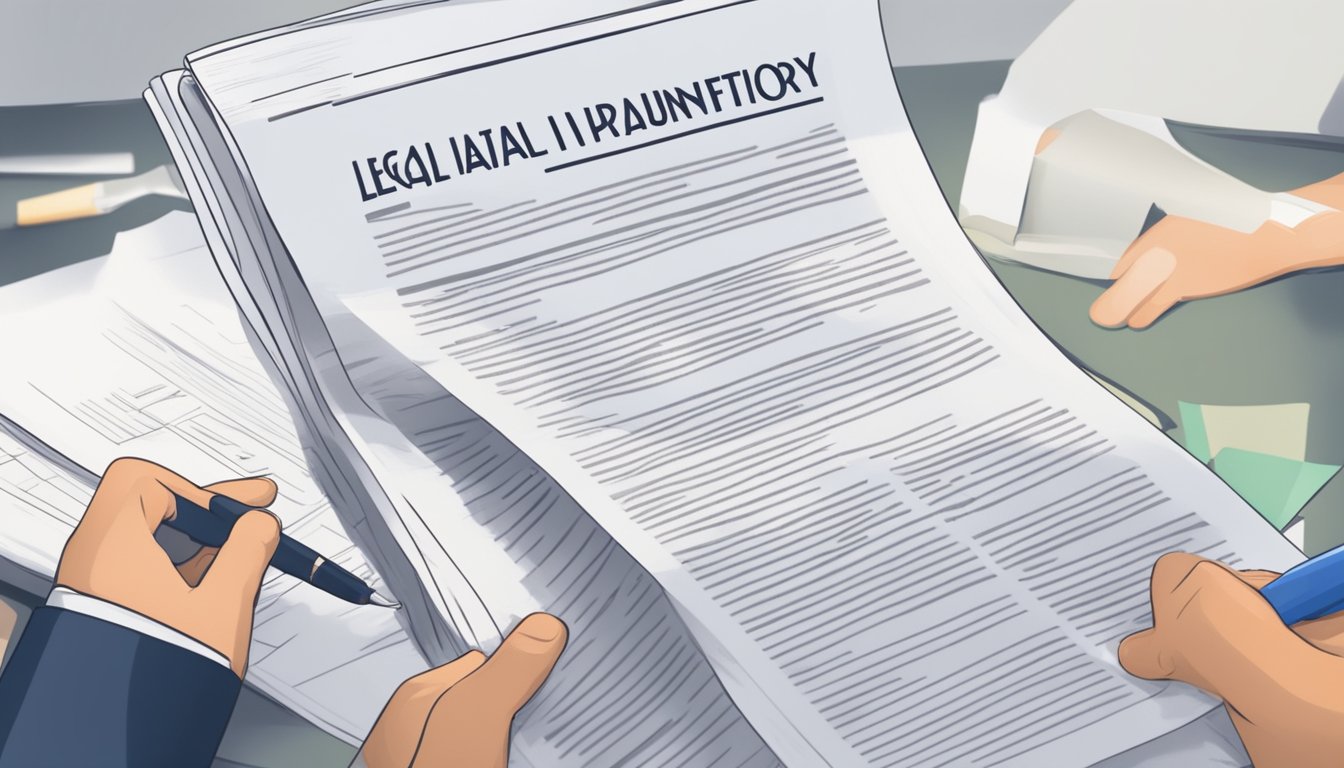Understanding Bodily Injury

Bodily injury refers to any physical harm or damage to a person’s body.
This can include injuries like cuts and bruises, broken bones, and internal damage.
According to the Merriam-Webster, it encompasses pain and illness as well.
In the context of the insurance industry, you will frequently encounter bodily injury in motor vehicle accidents.
Insurers use this term to determine liability and compensation.
The legal definition includes a broad range of physical conditions.
Key Points:
- Common Situations: Car accidents, workplace injuries, and criminal acts often involve bodily injury.
- Legal Use: In legal cases, bodily injury includes the physical condition of the injured party. It can also involve emotional distress when relevant.
- Insurance Policies: Many insurance policies cover bodily injury, providing financial protection to both businesses and individuals.
Examples of Bodily Injury:
- Minor Injuries: Scrapes, cuts, and bruises.
- Serious Harm: Broken bones, internal injuries.
- Other Conditions: Illness caused by the injury or pain.
Legal Aspects:
Bodily injury definitions can appear in legal dictionaries and various legal documents.
These definitions help determine what qualifies as an injury under the law.
It is important for an employee or business owner to understand these definitions to ensure compliance and proper handling of claims.
Legal Terms:
- Emotional Distress: Sometimes linked to bodily injury if it results from the physical harm.
- Official Detention: Injuries that occur during arrest, custody, or transportation can also fall under bodily injury.
- Territorial Scope: Applies across the United States, District of Columbia, and other U.S. territories.
Understanding the definition of bodily injury is crucial for navigating legal and insurance processes effectively.
Legal Repercussions of Bodily Injury
Legal repercussions of bodily injury are significant and can vary depending on multiple factors.
When someone suffers a bodily injury, they may face substantial medical expenses and hospital bills.
These costs can add up quickly, leading to financial strain.
Insurance coverage plays a crucial role.
Bodily injury liability insurance helps cover the costs related to medical bills, hospital expenses, and even pain and suffering.
This coverage is part of a standard automobile policy and can protect you from hefty payouts in case of an accident.
If you’re at fault, you may face a legal claim due to negligence.
This can lead to a lawsuit where you might be required to pay compensation to the injured party.
Compensation might cover not just medical expenses but also emotional distress and other damages.
In addition, you could be responsible for property damage incurred during the incident.
Legal fees can also pile up, especially if the case goes to court.
Coverage limits in your insurance policy define the maximum amount the insurer will pay.
If the costs exceed these limits, you may be personally liable for the difference, which can be financially devastating.
Certain states have specific laws regarding bodily injury liability.
For instance, adult responsibility laws might hold parents accountable for injuries caused by their children.
Nonrenewal of your insurance policy might occur if repeated claims are made, affecting your ability to get coverage in the future.
Legal consequences under worker’s compensation laws also apply if the injury happens at work, guaranteeing the worker some benefit for their injuries.
Insurance Coverage for Bodily Injury

When it comes to car accidents, bodily injury liability insurance is crucial.
This type of insurance helps cover medical expenses for injuries you cause to others in an accident.
Here are some key points about bodily injury liability coverage:
- Coverage per person: This limit specifies the maximum amount your insurance will pay for one person’s injuries in an accident.
- Coverage per accident: This defines the total amount your insurance will cover for all injuries in a single accident.
Types of Coverage
-
Medical Expenses:
Bodily injury coverage helps pay for emergency services, hospital stays, and other medical costs incurred by the injured parties. -
Loss of Income:
If the injured party can’t work due to the accident, this insurance can help cover their lost wages. -
Legal Fees:
In case of a lawsuit, bodily injury liability can help cover your legal defense costs. -
Rehabilitation:
Costs for physical therapy and other rehab services are also covered.
Property Damage
Alongside bodily injury, property damage liability is another important aspect of car insurance.
This covers damage you cause to another person’s property, such as their car.
Personal Injury Protection (PIP)
PIP covers your medical expenses, regardless of who is at fault.
This type of insurance can also cover disability and loss of income.
Coverage Limits
Coverage limits are essential in any insurance policy.
It’s recommended to have limits of at least $100,000 per person and $300,000 per accident.
Higher limits can provide better financial protection.
Understanding the specifics of bodily injury liability can help ensure you have adequate coverage.
Always check your policy details to know your coverage limits and exclusions.






